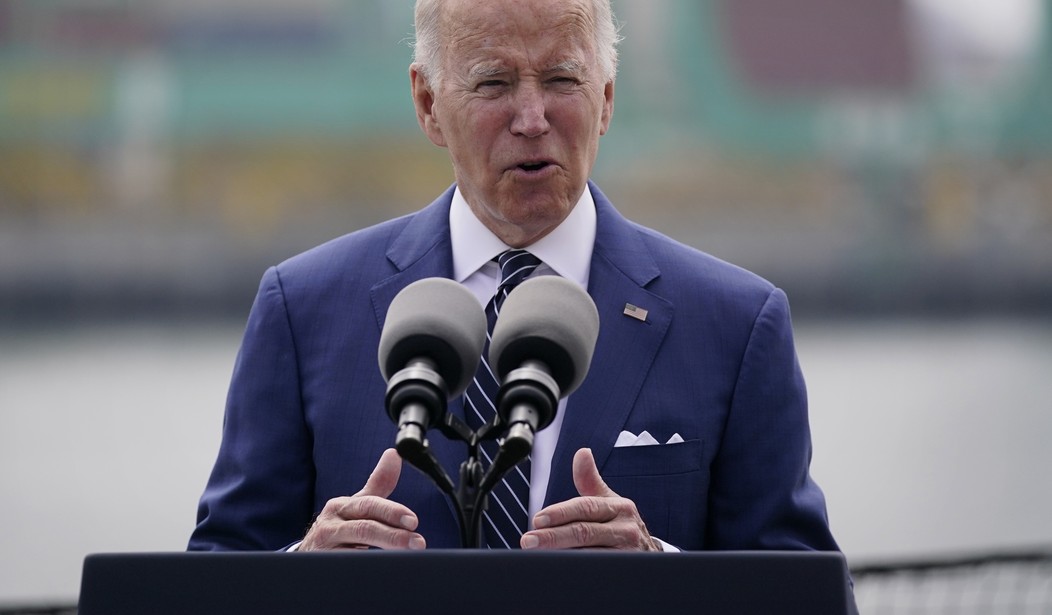Are we in a recession? Consumer spending says no no no, but the Atlanta Fed’s lips say … maybe. After a 1.6% annualized contraction in Q1, mainly due to technical issues around a massive trade deficit, Catherine Rampell noted earlier today that some prognosticators have begun to abandon the optimism they had last month for a bump upward in Q2 of as much as 2-3% annualized growth.
The Atlanta Fed has turned downright gloomy, in fact:
Atlanta Fed GDP Now also predicting negative growth for Q2. Blue Chip consensus forecast as of late May was still positive https://t.co/NRte0qkIlQ pic.twitter.com/vUL6MoiMtL
— Catherine Rampell (@crampell) June 30, 2022
And actually, consumers are saying no no no all right, but it’s to more spending. The rate of growth in spending dropped to its smallest monthly gain of the year, the Commerce Department reported, and that also has another prognosticator changing its tune:
U.S. household spending slowed in May as Americans faced historically high inflation, raising the prospect that the economy has contracted for a second straight quarter this year.
Consumer spending cooled to a 0.2% advance in May, the Commerce Department said Thursday. That was the smallest monthly gain this year, and down from the revised 0.6% increase in April.
Following the soft spending figures, economists at S&P Global Market Intelligence said they forecast gross domestic product to contract at a 0.7% annual rate in the second quarter, which ends Thursday. They previously forecast very slight economic growth.
The news wasn’t any better on wages — and in fact a bit worse:
Thursday’s report showed personal income grew by 0.5% in May, the same as April’s rate. Adjusted for inflation, after-tax income declined by 0.1% in May, showing that wage increases have been struggling to keep up with price rises. Inflation-adjusted spending declined by 0.4% in May, the first decline in real spending since December.
Speaking of inflation, that’s not abating much either despite the light tap on the brakes this month from the Fed:
Inflation held at stubbornly high levels in May, though the monthly increased was slightly less than expected, according to a Commerce Department gauge closely watched by the Federal Reserve.
Core personal consumption expenditures prices rose 4.7% from a year ago, 0.2 percentage point less than the previous month but still around levels last seen in the 1980s. Wall Street had been looking for a reading around 4.8%.
On monthly basis, the measure, which excludes volatile food and energy prices, increased 0.3%, slightly less than the 0.4% Dow Jones estimate.
Headline inflation, however, shot higher, rising 0.6% for the month, much faster than the 0.2% gain in April. That kept year-over-year inflation at 6.3%, the same as in April and down slightly from March’s 6.6%, which was the highest reading since January 1982.
This is the metric that the Fed watches most closely for its rate-setting policies. Typically, the Fed basis rate should match or exceed the inflation rate in order to keep it under control. Right now, the Fed’s prime rate is at 1.75%, which is why Jerome Powell’s moves aren’t having much of a taming effect on inflation. The Fed can’t just jack that rate up by five full points in one swift move, however, not without locking up the economy and creating a capital crisis. Powell & Co have no choice but to move incrementally and hope that inflation starts to come down and meet them at some point.
This, clearly, is not that point.
So does this mean we are on the cusp of a recession? Perhaps by the popular definition, which is two quarters of contraction in a row, but that’s not how recessions are defined. Even with overall contraction, the internal components of those reports matter, as recessions are more complex and technical in nature. The classic signals — sharp drops in output and employment — are nowhere to be seen at the moment. A pullback in consumer spending would likely cause both if inflation continues at this pace, but at least for now we have consistently added jobs and expanded production, although not to the same pace that demand has grown.
These indicators look more like an extended period of stagflation will hit, and may already be upon us. That’s bad enough, but not as damaging as a recession. However, as Powell keeps tightening the leash on monetary supply, we could easily tip over into a recession. We’re probably about a week away from White House messaging about how patriotic it is to spend, spend, spend as the Biden administration tries to avoid either outcome. Unless it provides some dramatic policy changes, especially on energy and gasoline production, those will likely prove as futile as the Whip Inflation Now buttons of the mid-1970s.








Join the conversation as a VIP Member